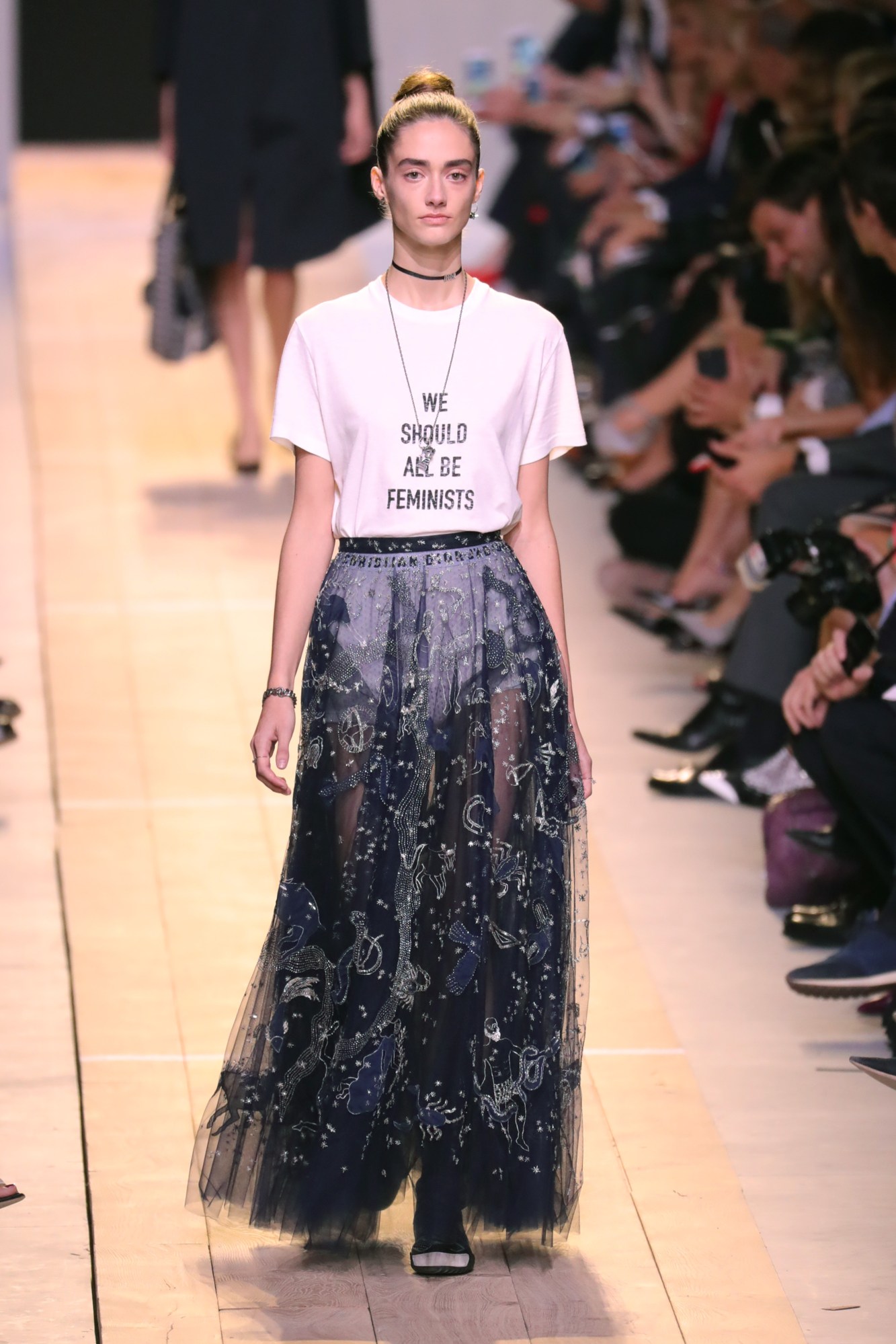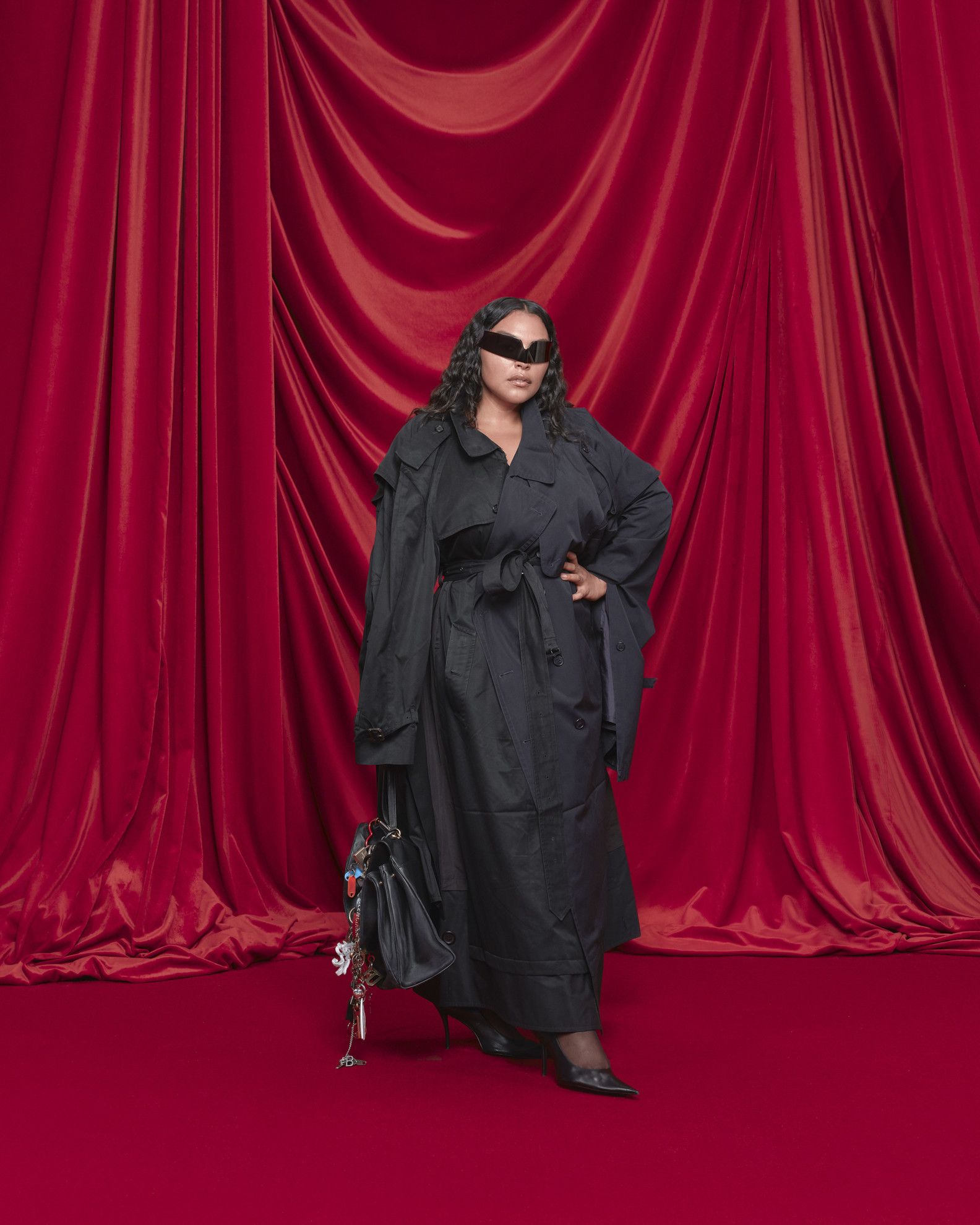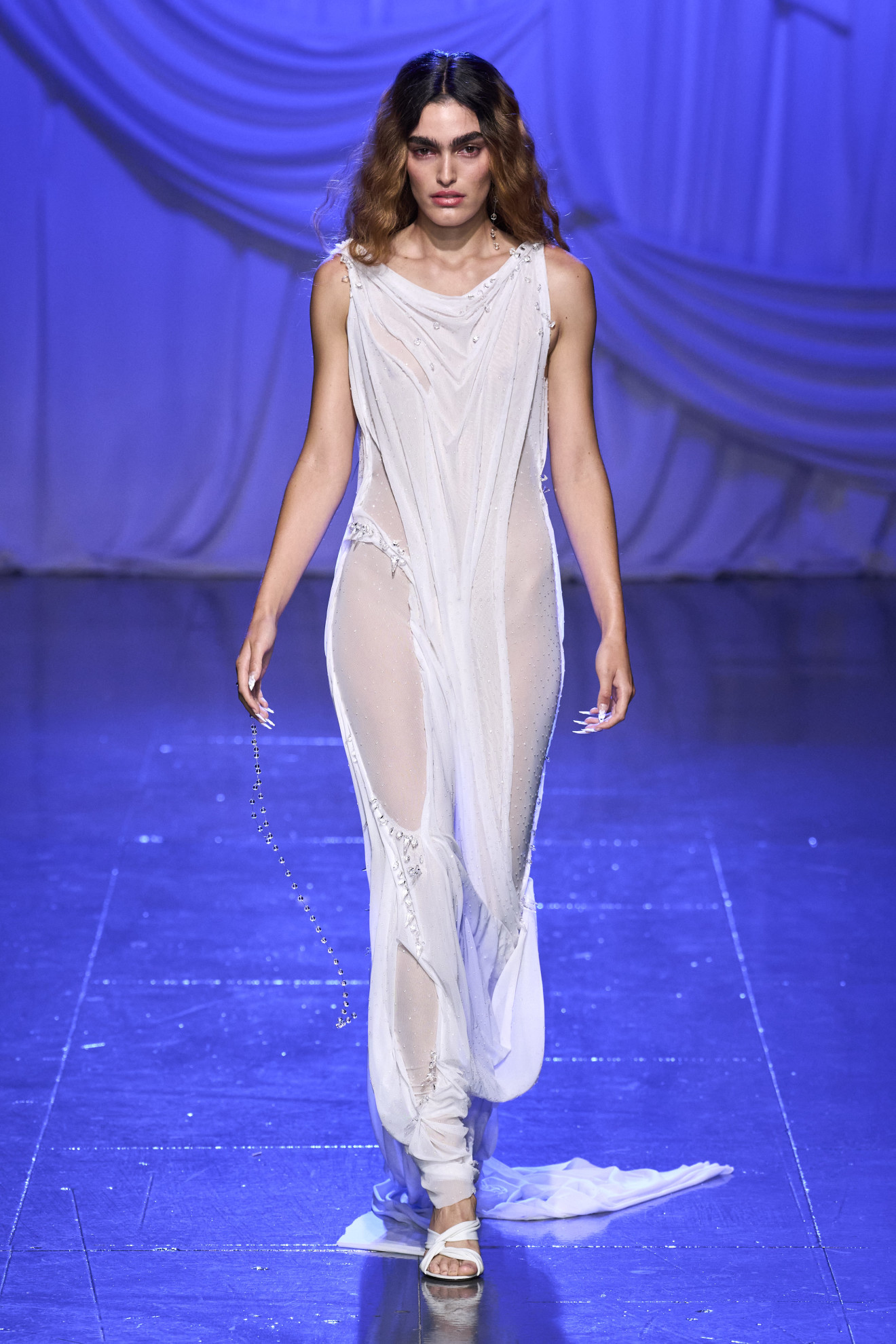When Dior debuted their ‘We should all be feminists’ t-shirt on the SS17 runway, fashion reached peak feminism. Women in Washington were wearing pink pussy hats and female designers were routinely asked to detail the feminist messages in their work. Feminism had become a trend, listed alongside statement earrings and florals for spring. It might have been groundbreaking at first, but by the time it reached its peak, feminist fashion design had been diluted for the mainstream. The result was a watered-down idea of feminist politics in fashion made largely for and by white middle-class women. The Dior t-shirt went on sale for £700. It became a symbol of the commercialisation of feminism by the fashion industry. Aesthetically at least, feminist fashion lost its cool.
This year, fashion has been dominated by hyperfeminine trends, from balletcore and barbiecore, to bows literally everywhere. Where designers might have once talked about feminism, the conversation today often focuses on femininity. That said, the two often go hand in hand. Many of these hyperfeminine trends began as a way to unapologetically reclaim feminine aesthetics, which are sometimes looked down on or used as a reason to not take femininity seriously. While this reclamation was once radical, it is now commonplace.

The landscape of feminism has shifted since feminist statements flooded the runway around 2016. On one hand, there’s more awareness about intersectionality, but on the other, the rise of trans-exclusionary radical feminism has left some progressive women wanting to distance themselves from the feminist label. However, women are still exploited and overlooked at every level of the fashion industry, from the majority female garment workers in the Global South to female designers in the luxury sector being overlooked for top creative director jobs.
Subversive feminist fashion still exists, but it’s mostly young, independent designers who are helming the movement and using fashion to prompt deeper conversations about women’s bodies, choices and power. Michaela Stark’s body-contorting lingerie plays on balletcore and coquette aesthetics while also drawing from her personal experiences as a woman. “When I started using hyperfeminine aesthetics I didn’t even think about it being politicised,” she says. “Then I realised the way my body is squished and placed is quite a political statement, but I didn’t decide to do balletcore because of that. I just did it because I liked it.”
For Stark, feminist fashion will always come back to choice. “That’s why it’s so important to have different voices at the top so there is a place for women who just want to look feminine, but there’s also a space for other things to be going on as well,” she says. “It’s about choice and not just trying to adhere to societal beauty standards which is what I see happening on TikTok. Not only is every girl dressing in hyperfeminine, balletcore and coquette clothing, but they’re all getting botox so young. It’s not about stopping those girls from doing that. It’s just trying to show that there are other options out there so they don’t feel forced into it.”
A central theme of Stark’s work is body acceptance, which is part of her feminism. Luxury fashion’s inclusion of diverse body shapes has typically moved at a glacial pace, but in recent seasons brands like Chanel and Balenciaga have finally started putting curve models on the runway. The general consensus from the public, however, will take more time to shift.
Earlier this year, Stark was part of the new Victoria’s Secret fashion show. Her designs purposefully accentuated the curves of the body, a far cry from the unrealistic beauty ideals perpetuated by the original Victoria’s Secret angels. To this day, Stark experiences online abuse and fatphobic vitriol about her involvement. The designer recently clapped back at critics with a photoshoot of her eating a burger in a t-shirt that reads, “Bring back Gisele,” one of the comments hurled at her by trolls unwilling to move past the Gisele Bündchen era of Victoria’s Secret.
It has been noted that some mainstream depictions of hyperfemininity in fashion encourage a worrying return to thinness as the ideal body type. Fashion historian Shelby Ivey Christie suggests we should be careful about interacting with these aesthetics on just a surface level. “We also have to examine the implications of the politics behind it, right?” she says. “With coquette, and the ballerina look, a lot of ballerinas have to be very, very thin. There’s always been a lot of open discussion about eating disorders in the industry. Are we discussing that in tandem with dressing in coquette style? They need to exist hand in hand.”

“Feminist fashion doesn’t have to be super serious or sad,” Christie adds. “It can be fun. It’s about empowering women, addressing diverse groups of women and telling an authentic story about women and women’s bodies and women’s experience through clothing.”
Another independent designer who does just that is Kazna Asker. Her work focuses on uplifting Muslim women and showing how vast the umbrella of feminist fashion can be. Asker blends streetwear and Islamic fashion while working closely with her local community in Sheffield. For SS24, instead of showing a new collection as part of London Fashion Week’s NEWGEN programme, she chose to showcase a film called Fight For Me Sheffield which focused on the importance of education, local businesses and young people in the Yorkshire city. Asker’s multidisciplinary approach looks to uplift people of all genders in her community. When it comes back to fashion, she homes in on the empowerment that comes from traditional modes of dress.
“I always saw Islamic modesty and muslim women wearing hijabs and abayas, keffiyehs, tribal and cultural fabrics from our home countries as the most powerful symbol of feminism,” Asker says. “The way designers talk about feminism in fashion has changed because there are so many perspectives and voices to listen to now. You can express the values of feminism within fashion in so many different ways, but I don’t think a trend will be sufficient enough to represent the feminine and the feminist in fashion. I think so many fashion worlds will rise at once to represent the different voices of feminism.”
For feminist fashion to move forward, intersectionality is key. No brand can represent every kind of woman and every kind of femininity all at once. And after all, the most feminist fashion comes from a place of authenticity. It’s rooted in personal experience and just happens to challenge society’s preconceived notions of gender, beauty and fantasy. It’s impossible to fight for every kind of woman at once using fashion alone, which is why many feminist designers choose a niche to home in on.

Dimitra Petsa of Di Petsa curates visceral runway shows and presentations using dance and performance to celebrate the female form. Her SS24 show depicted the birth of Aphrodite and used it as a metaphor for the way in which women are increasingly sexualised as they come of age. The model was surrounded by dancers symbolising the ocean that Aphrodite emerges from. Wetness is a repeated motif used in her work to evoke femininity and emotion in ways that are both beautiful and subversive, exploring how femininity has been repressed, censored and sanitised. “I talk about female wetness and how we should rebel against the way we are taught to hide it,” she says. “If you cry in public you need to hide it. If you breastfeed in public you need to hide it as if the fact that we are wet and that we come from water is something to be hidden. Our bodily fluids are a holy thing to me and I also see it as a very integral part of the femme experience.”
In choosing to focus on a specific niche within feminism, designers like Stark, Asker and Petsa are helping push the conversation forward. What’s needed is more nuance on an industry-wide scale and an understanding among male CEOs that there’s power in women designing for women rather than men choosing what women wear. In certain corners of the internet, these nuanced conversations are starting to take place. You only have to look at the backlash against the number of white male creative directors at the top luxury brands to see it happening.
Fashion isn’t the beginning and end of feminism and women shouldn’t feel pressured to always dress in a way that feels political. Sometimes we just want to wear bows in our hair because it makes us feel good. It will always be about choice first, but feminist fashion is also about uplifting women and femme people at every level in the industry and showing that there’s more than one way to express your femininity.




